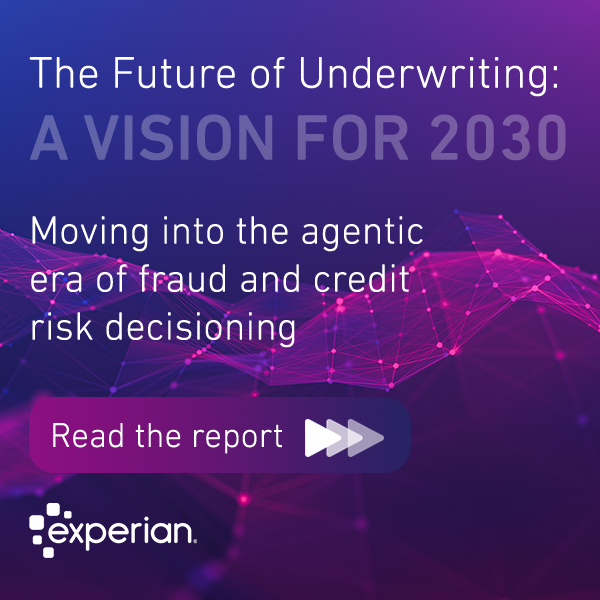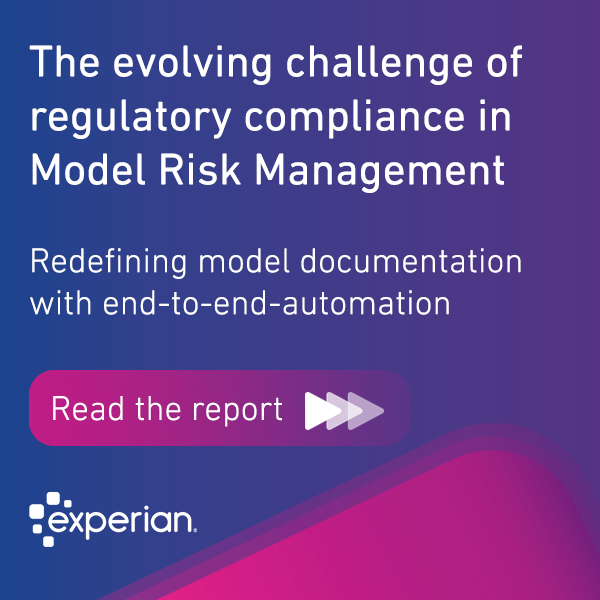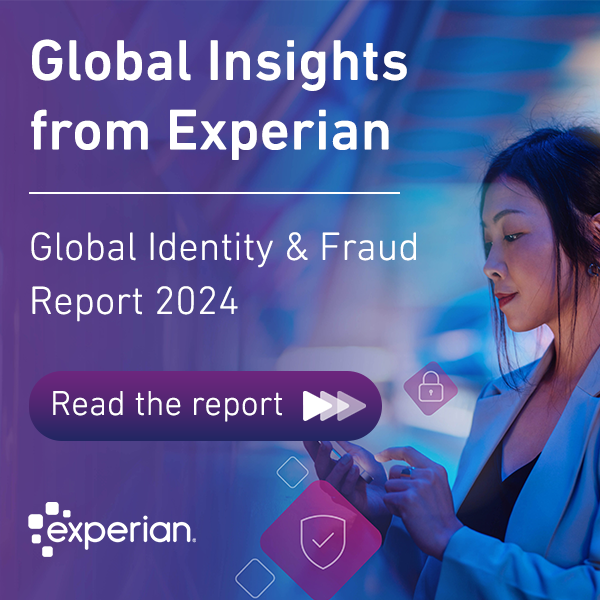Strategy & Operations
We look at the key business and operations challenges that keep business leaders moving forward.

Financial institutions have long been dependent on technology for business operations, resulting in a long history of tech additions, upgrades and vendors. Changes made to legacy IT systems can not only impact customers, but in many cases, the economy too. Often these systems feel safe and familiar, so it can be a difficult choice to make a change. However, over the last year the pandemic has highlighted the need for agility within the market. Responding to changing customer needs in an increasingly digital environment is number one priority. What do we mean by legacy tech? The term legacy tech has a lot of negative connotations. It refers to a set of computer systems, software and technologies that can no longer be maintained or easily updated. The system could be out of support or in extended support. Integration becomes a challenge because different technologies have accumulated over the lifespan of the business, and the associated support levers around it are all different. There is also the challenge of finding the skills to maintain these systems – in-house or outsourced from providers. Maintenance costs can be high – security and resilience test costs will add to this, while performance will drop with the increasing need for work-arounds. Upgrades can be complex, expensive or even impossible on legacy systems, generating extra costs. Financial institutions create their own legacy systems when they start integrating various data sets from different sources. It can happen when the business grows to new locations, new lines of product, extended consumer services, while using different tech from different vendors. Cloud as an enabler for business transformation From the moment code is written and deployed, it becomes legacy. Cloud integration allows for daily code releases and automated upgrades meaning that businesses are constantly adjusting and responding to client needs, regulation and strategic changes. They can instead focus on their business model and innovation, staying relevant and up to date. Budget is directed towards improvements and innovation instead of maintaining the legacy tech. It brings an interesting level of agility, with the ability to respond to the market much more quickly and effectively. How cloud can benefit the customer Cloud-based services have allowed banks to revolutionize onboarding processes and timescales. Processes like KYC (Know Your Customer) can be carried out by partners for a fast and efficient experience. Throughout the lifecycle of a customer, banks can leverage third parties for every part of the journey and ultimately improve customer experience. Beyond the onboarding process, the entire customer lifecycle, from originations to collections, can be transformed by removing friction and using AI to create interest, and ML to make decisions for quick results. Experian has partnered with Open Banking Expo TV to produce a series on Cloud-based solutions. Sign up to watch. Related content

Credit providers have long relied on data to lend insights into how their customers are faring—and help predict what's to come. The pandemic, however, introduced unexpected anomalies that have made understanding the actual credit landscape far more challenging. For example, while government assistance programs have enabled customers to stay up-to-date on their payments, they've also made it harder to discern the true financial impacts of the crisis. Our recent research gives voice to these challenges. We surveyed businesses around the world three times from July 2020 through January 2021 for our annual Global Decisioning Report. The results reveal that business confidence in credit risk analytics models has declined over the pandemic, dropping by nine percentage points for Tier 1 lenders, and 15 percentage points for Tier 3 lenders. As we look ahead, credit providers need ways to improve confidence in their analytics models so that that they can make smarter, faster decisions on behalf of their customers and businesses. This is where synthetic and alternative data are beginning to make a real difference. The rise of AI and machine learning solutions has opened the door for lenders to leverage this data. Understanding how to put it to use—and why it's imperative to do so—will help lenders navigate the end of this crisis and prepare them for any economic volatility in the future. The data differentiator Before we dive into how lenders can best utilize alternative and synthetic data, let's quickly define what we're discussing. Credit providers have traditionally used credit bureau data to assess their portfolio risk and inform credit decisions. But as noted, in times of crisis, supplementing that data with additional context can significantly improve its effectiveness. Alternative data does just that. Alternative data refers to primarily unstructured data from non-traditional sources. For example, social media data can help paint a more complete picture of customer behavior. And location data can provide information about customer geography, such as opportunities for travel-related purchases. Synthetic data complements alternative data but is not the same. Synthetic data is new data created by altering existing data. So a lender might change the profile of its customer base and then use that dataset in analytics models to better understand what the future may hold. Both types of data work together, with alternative data providing a more complete customer view and synthetic data allowing lenders to account for additional variables and offset their risk accordingly. New data in action Confidence in analytics models may have dropped during the crisis. But lenders aren't resting on their laurels. Instead, nearly half of businesses report that they are dedicating resources to enhance their analytics efforts. Those that include alternative and synthetic data in their improved models have the opportunity to leverage the information in multiple ways. Some of the most exciting applications of alternative and synthetic data include: Anticipating purchasing behavior New data sources, especially from social media, help lenders understand what's happening in their customers' lives and how that may translate into purchases. For example, a customer who has recently moved into a new home may be considering purchasing furniture or home décor. Or customers who are celebrating life milestones such as birthdays or graduations may be buying gifts or spending on events. Predicting credit risk In this realm, synthetic data can be beneficial. Lenders can use synthetic data to understand how credit profiles may change in specific circumstances, such as modeling a higher unemployment rate or dramatic income shifts. They can then use analytics models to determine the related impact on customer affordability. Improving fraud detection With an improved customer view, fraud prevention teams can more easily identify unusual patterns in customer behavior and spending. For instance, does a customer's current location (per location data) match their most recent transactions? Or has the number of contacts on their phone dramatically changed (it may not be their phone)? Enhancing pricing Both types of data are useful in improving pricing models across company portfolios and at a personal level. The additional context can help everyone from lenders to insurers to banks assess customer needs and provide products that meet them—at prices that make sense. What's more, machine learning automates that pricing, allowing companies to scale personalization across the organization. Improving marketing In the same vein, new sources of data can also give marketing efforts a boost. The ability to access more real-time information about customer behaviors uncovers opportunities to provide them with credit, insurance, and other lending products that may prove immediately helpful. Data can also help identify new markets entirely or highlight rising needs that may demand the development of additional products or services. The past year was an anomaly in so many ways. However, as we ease out of the crisis, financial service companies have the opportunity to strengthen their data models—and leverage new types of data to reduce their risk and provide improved decisioning no matter what the future holds.

Did you miss these June business headlines? We’ve compiled the top global news stories that you need to stay in-the-know on the latest hot topics and insights from our experts. Fintech Interview with Executive Vice President, Experian – Eric Haller FinTech Buzz talks to Eric Haller, VP & General Manager, Identity, Fraud & DataLabs, about various key trends and challenges in the Digital Identification domain and how fintech prevents fraud in the financial market. Experian on Fraud: 2020 Was a Big Year for Nefarious Actors and Illicit Activity in Financial Services David Britton, VP, Industry Solutions, Global ID and Fraud at Experian, recently shared with Crowdfund Insider Experian’s insight into fraud and what the business is doing to combat nefarious activity in financial services. Evolution of digital identity Professional Security Magazine Online talks to David Britton, VP of Industry Solutions, about how the preference for digital-first was sparked and then accelerated through the Covid-19 pandemic, but the concept of digital identity and the need for its evolution will remain prevalent for both consumers and businesses way beyond that. Preventing fraud without compromising the customer experience Finextra looks at Experian's Global Identity and Fraud Report 2021 to uncover why customer experience is central to the approach for businesses when balancing fraud prevention and revenue. Three things lenders need to do to navigate today’s complex lending and credit landscape Business Information Industry Association covers Experian's Global Decisioning Report 2021 highlighting the dual-lane economy and what lenders can do to succeed in this complex and changing landscape. Stay in the know with our latest insights:

As we enter the beginning of the end of this global crisis, the role of data, analytics, and credit risk decisioning takes on even greater significance than before. Consumers face uneven roads to recovery, with some ready to spend again and others still mired in pandemic-related financial stress. And businesses of all sizes report their operations are recovering but there’s still a way to go. A key difference we saw is that companies that adapted to serve customer needs digitally are faring much better. Our 2021 Global Decisioning eBook, Navigating a new era of credit risk decisioning, looks at how consumers are stabilizing their finances and how businesses are returning to growth. A recent survey among 9,000 consumers and 2,700 businesses across ten countries worldwide reveals the importance of lenders prioritizing digital transformation, and the role of advanced data and analytics in enhancing the customer experience. The pandemic fall-out is impacting everyone differently: 1 in 3 consumers remains concerned about their finances – paying bills and managing credit Whereas high-income households are no longer reducing their discretionary spending Navigating this varied credit landscape requires a deep understanding of customer needs on both ends of the spectrum. However, business confidence in the consumer credit risk management analytics models dropped over the past year from 71 percent to 61 percent. Smaller lenders with revenues ranging from $10M to $49M have seen the sharpest decline from 72 percent to 57 percent in the past six months. Adapting data and analytics to a rapidly changing customer base: Almost 50% of businesses surveyed said their dedicate more resources to enhance analytics One-third of businesses are planning to re-build their models from scratch Recalibrating credit models is one thing, but lenders also need to rethink their data sources to better understand current customer profiles. The data inputs generated by the pandemic have impacted credit risk models and machine learning applications in unexpected ways. For example, widespread payment holidays and government stimulus programs may be masking customers’ true financial circumstances. According to Recovery Insights, a separate study published by Experian North America: Delinquency prior to the pandemic is a strong indicator of future risk. Accounts exiting an accommodation period are 2x more likely to become delinquent than are accounts that never received an accommodation. Payment on debt during accommodation indicated a reduced risk for subsequent delinquency. Amidst the pandemic lockdown, consumers turned online to manage finances and connect with lenders – including older consumers. And while the pandemic pushed consumers online out of necessity, now that they’re there – it’s become a preference – as overall digital gains are holding above pre-pandemic levels. Lenders have a new digital imperative to meet consumers’ evolving needs for continued digital engagement. Consumer expectations of digital experiences 55% of consumers have higher expectations of their digital experience since Covid-19 began 43% of consumers surveyed age 70+ reported digital banking throughout the pandemic 14% of consumers surveyed age 60-69 applied for a new loan or card online The importance of a digital-first approach has revealed itself and many companies have put a digital customer journey in place since Covid-19 began. The future, however, is more than providing online services. It’s about knowing your customers well enough to anticipate their credit needs and using tools to automate the process and reduce risk. Adapt or lose customers 9 in 10 businesses have a digital customer journey in place 1 in 4 consumers have taken their business elsewhere because a company didn’t adapt to their digital needs Online customer experience and credit risk management are more connected than ever before. And, businesses need technology that supports the entire customer journey, from onboarding to customer management to collections. Five digital investments businesses are prioritizing the new era of credit risk management: Implement new machine learning models for customer decisions Increase digital acquisitions and engagement Understand their customer base (affordability, value, behavior) Automate customer decisions Increase value of existing customers Access the report here to get more consumer trends and find out what the future of decisioning means for businesses looking to return to growth. Stay in the know with our latest insights:

In a recent interview, I had the opportunity to talk to Chris Preimesberger of eWeek about the latest Global Identity and Fraud Report. We discussed some of the business challenges executives face in the increasingly complex space around fraud mitigation while reflecting on how and why the pandemic has shifted the fraud landscape. Market movement – more of us were online than ever before With so many of us at home during the pandemic, access to digital services and the purchasing of goods online increased dramatically. According to our research, businesses responded by investing in supporting services to accommodate the increase in traffic. We saw a lot of action from businesses around how to improve the customer experience while getting a better understanding of who the customers are and how to get their online problems resolved. Our January research wave showed that with all this investment into customer experience and enablement, there were some key areas of investment. Analytics – the use of automation and AI to help make smoother, better decisions for customers – ranked highly in business priorities, but this approach does not exist in isolation. Businesses are also doubling down on support staff to ensure that consumers have a way, if there’s an anomaly in the process, to be able to respond. Whether that’s password resets or call centre staffing, there’s a desire and there’s an intention by businesses to increase staff on digital support. A shifting sense of recognition We also surveyed consumers on their preference for passwords versus other security methods. Security remains the top consideration for consumers when online, above others such as convenience, but interestingly, for the first time in four years password protection did not appear in the top three preferred security methods, favoring instead a more friction-less approach to authentication. This shift in consumer attitudes towards what we call invisible security paves the way for businesses to start to adopt more sophisticated or nuanced approaches to authentication and security. They can start to leverage behavioral analytics or device intelligence recognition without intruding on the user experience. Normalizing biometrics and the importance of a layered approach Customer attitudes around traditional biometrics are very positive – it’s one of the top-rated preferred security methods thanks to the providers that have popularised it through the mobile devices we all use every day. However, the challenge with pure biometrics is always at the point of enrolment – how do you ensure that the right person is assigning their biometric to a device? This is why a layered approach to security that incorporates traditional identity verification or authentication processes along with more advanced technical elements like behavioral analytics, device intelligence, network access, and transactional context is so important. For example, “Is this device associated with David’s account? Is this actually David or a bot? How does David hold his phone?” This includes layers of security that are considered privacy-safe, and may not even require traditional identity data but have anonymous attributes that can be associated with how someone interacts. This will be pivotal in allowing businesses to enable a more comprehensive, pliable, and flexible approach to security rather than relying on rigid but easily broken mechanisms that we’ve been using for a long time. Why the types of fraud will change as the world seeks normality Over the last year, fraudsters focused their energies on stimulus funding and many other forms of low-hanging fruit that they could easily go after, pulling back from their activities in traditional financial services or e-commerce. As the pandemic eases off in many parts of the world, fraudsters are likely to increase their activity in these areas once again as stimulus programs close down, and as consumers increase their spending. Fortunately, we found that more than half of businesses will continue to invest in fraud prevention solutions over the coming year. Fraud trends to watch in 2021 As we look at the direction in which fraud is moving, we know there is an increase in several types of fraud as we navigate what is becoming the post-pandemic world of 2021. Account takeover fraud is set to be on the rise again this year. This is when stolen credentials are used to gain access to systems. Account origination or new account opening fraud will also be on the increase, where fraudsters use stolen identities to create brand new accounts, including a rise in synthetic identity fraud. Card not present online transactions is something we will see in huge volumes given the explosion of online traffic over the last year, which will undoubtedly include an increased volume of fraudulent transactions. Stay in the know with our latest insights:

The pandemic has enabled something close to a digital revolution, but how can businesses keep up with shifting consumer behaviors while ensuring fraud prevention is top of mind? Our latest Global Identity and Fraud Report takes a look at key consumer trends online and how businesses are responding.

In our first episode of the Women Making Waves in Tech podcast series, we hear from Shobana Balasundaram, Director of Product Management at Experian Global Decision Analytics. Shobana leads the product roadmap for PowerCurve Suite, Experian’s award-winning decisioning software platform. Shobana’s passion for introducing new solutions and product features is contagious: “During my time managing this collection of software solutions, I have had the chance to bring some advanced analytics and machine learning features to market. Indeed, some of the new product features that I have launched have driven nearly half of our revenue growth in the past few years, which confirms that decisioning software is a growing area. And I love my job!” Blending business strategy and tech advancements Shobana discusses what it takes to bring business strategy to life by applying the latest tech advancements. “It’s all about transforming an idea into a product and putting it in the hands of a client so they can deliver value to their customers,” explains Shobana. In her current role with the global product management team for decisioning software, Shobana is responsible for thinking about what kind of features to build into the product and forecasting the level of growth it will generate. That also involves addressing the market’s and competition’s reactions. But for her, the part she enjoys the most is “taking an idea, thinking about what is the possible problem you're solving and turning that into a product feature. Getting that idea-turned-into-a-solution in the hands of a client is a very satisfying experience, end-to-end.” Access all episodes of Insights in Action on Soundcloud, Spotify, Google Podcasts

The surge in digital demand over the past year reinforced the deep connection between recognition, fraud prevention, and the online customer experience. As businesses transformed their operations to accommodate the rapidly growing volume of digital transactions, consumer expectations for easy, secure interactions increased at an even faster pace. And that meant less tolerance for the interruptions caused by security and risk controls. Our 5th Annual Global Identity and Fraud Report highlights these shifts and more, drawing on three waves of data collected throughout the pandemic. The business and consumer surveys took place in waves from June 2020 to January 2021 across 10 countries spanning North America, Latin America, Europe, and Asia-Pacific. The breadth of data reveals notable changes in consumer and business behavior and priorities as each navigated the crisis. One of the many heartening discoveries included the fact that 8 in 10 businesses said that they now have a customer recognition strategy in place, up 26% since the start of the pandemic. Many companies also developed digital strategies as they strove to improve their online experience and provide security and fraud prevention measures when customers needed it most. When it comes to fraud prevention, companies are continuing to invest in securing online experiences. This is an encouraging trend, especially given that we anticipate fraud attacks will increase significantly in the near term. Here are some key consumer trends from the 5th Annual Global Identity & Fraud Report: Consumer digital trends and behaviors As of January 2021, 43% of consumers plan to increase their banking and shopping transactions in the next 12 months 60% of consumers globally have used a universal mobile wallet, a +7%-pts increase since the pandemic began and highest (66%) among under 40s 55% of consumers say security is their top priority online. This has been the case for the past 5 years of our study, with privacy (23%) second. Consumer concerns for fraud 44% of consumers globally said they were most concerned about protecting credit cards and bank account details 1 in 4 consumers (only 23%) were concerned about protecting personal data e.g. date of birth, address, and SSN or equivalent 33% of consumers are worried about identity theft compared to 28% of consumers who were worried about it before the pandemic Consumer preferences are shifting towards invisible security 74% of consumers prefer the security of physical biometrics, which is most applicable to mobile devices and include facial recognition and fingerprints 72% of consumers prefer the security of PIN codes, requiring the use of two devices, each connected to the users’ account 66% of consumers prefer the security of behavioral biometrics, which is passively observed signals across browsers/ devices requiring no effort from the consumer Even as businesses prioritize the customer experience and support, our research found that they’re still sustaining pre-pandemic levels of investment in security and fraud management. Access the report here to get more consumer trends and find out what businesses are focusing their investments to improve their customer’s digital experience, including fraud prevention.

Did you miss these March business headlines? We’ve compiled the top global news stories that you need to stay in-the-know on the latest hot topics and insights from our experts. How to build consumer trust without sacrificing the experience This Forbes article explores the relationship between brand trust and customer experience using the lastest research from Experian. Read about how simple verification methods, personalization and ensuring the use of robust ethical data practices, can be key to driving consumer trust. Using AI for digital identification, fraud prevention, and increased ROI In this IOT for all article, Eric Haller, Vice President & General Manager of Identity, Fraud & DataLabs, covers how investing in AI will not only improve customer experience but also impact a company's bottom line. Digital and online trends in a post-pandemic world Nasdaq #TradeTalks Video Broadcast Series featuring Steve Wagner, Global Managing Director of Decision Analytics, covers what we should expect to see from consumers and businesses in a 2021 post-pandemic world when it comes to digital and online. How current data-driven digital identity impacts businesses and consumers 60 percent of consumers are using a universal mobile wallet to make digital payments according to Experian's latest research. Eric Haller, Vice President & General Manager of Identity, Fraud & DataLabs, talks to CNP about how digital identity solutions that use AI and ML will reduce fraud and improve customer experience when it comes to digital transactions. The sophisticated customer and the need for adaption This Q&A in the Digital Journal with Donna DePasquale, Vice President & General Manager of Global Decisioning, looks at how businesses should respond to consumers seeking a better online experience. Stay in the know with our latest insights:

At Experian, we have a long history of driving positive change in society. For example, our founder Si Ramo was one of the original thinkers around a cashless society much like the one that we are headed to today. Indeed, everything we do today as a company is built upon a foundation of data and information technology and anchored on the mission of giving consumers access to the financial products and financial information that they deserve. All of that while enabling consumers to protect their identities and to help businesses achieve their outcomes. Experian Decision Analytics’ mission is taking the complexity out of decision-making, enabling businesses to drive meaningful outcomes for consumers in moments that matter. We achieve that by making sense of that data, by applying advanced analytics and technology in ways that help businesses better serve their customers. Cloud-based technology helps make smarter, quicker customer decisions We are committed to extending our expertise and capabilities to businesses of all sizes so they can take advantage of a range of simple, affordable, and configurable solutions. That means that what was once only available to very large businesses is available to all, and that’s better for consumers. For us, helping businesses serve the needs of more customer segments, with confidence, is paramount. Leveraging decisioning software, rich data sets, advanced analytics, and cloud-based technology, we empower customers to make great risk-based decisions quickly, easily, and safely. That translates into innovation at scale, a lower total cost of ownership for clients, and greater access to the most effective fraud protection methods. We do this to help businesses lend more effectively, minimize and detect fraud losses, and comply with regulatory and privacy requirements. But, more importantly, we do this to help them deliver great experiences to their customers. Ultimately, all of that work helps society to flourish. More resources on digital transformation and automated decision management: Fair and explainable artificial intelligence is accelerating industry transformation How digital transformation is defining a new way to do business Automating Fairness: Using Analytics to Help Consumers in Pandemic Era

Did you miss these February business headlines? We’ve compiled the top global news stories that you need to stay in-the-know on the latest hot topics and insights from our experts. Experian launches new anti-fraud platform for digitally accelerated world Financial IT covers the latest on tools to help businesses safely meet the rapid increase in demand for digital services and online accounts. Eduardo Castro, Head of Identity & Fraud, speaks to gaining confidence in preventing fraud while meeting these new business challenges. Experian helps Atlas Credit double approval rates while reducing credit losses by up to 20 percent This Global FinTech Series article provides insights on efforts to make the power of artificial intelligence accessible for lenders of all sizes. Shri Santhanam, Executive Vice President and General Manager of Global Analytics and AI, shares background on constantly-changing economic conditions impacting credit models and how to rapidly develop and deploy models to keep up. 60 percent of consumers are using a universal mobile wallet New research shows a continuing trend toward digital transactions and mobile wallet payments. Steve Wagner, Global Managing Director of Decision Analytics, speaks to consumer and business insights on the increased demand and what businesses need to consider to ensure positive customer journeys that support these shifts. Why digital identity and the customer journey is crucial for today’s businesses Steve Pulley, Managing Director of Data Analytics, explores business opportunities stemming from the massive increase in consumers accessing services online. Taking the right steps not only helps ensure business survival but sustainable success. The key is fundamentals including the customer journey and digital identity. How modern data strategies underpin the digital identity and authentication practices critical to digital transformation In this Datanami article covering our progression toward a 'contactless world,' modern fraud prevention is explored. Dealing with a tremendous amount of data to offer security, while bearing in mind customer convenience, requires sophisticated technology. Holistic approaches both improve operations and helps keep pace with fraudsters to protect customers. Stay in the know with our latest insights:

If the past year revealed the rising demand for everything digital—it also highlighted key aspects of the online customer journey that organizations have neglected. Until now, most companies have prioritized their digital investments around the revenue-generating aspects of the customer experience. Online account onboarding, e-commerce, and credit lending are prime examples. However, when consumers require different outcomes such as payment support, the interactions are often still handled by call centers. We saw the consequences of this play out during the pandemic. As stay-at-home orders left call centers closed or understaffed, customers who needed help found themselves spending hours on the phone—or worse, were left without guidance. This digital disconnect may be common, but hopefully not for long. Forward-looking companies are creating end-to-end digital customer experiences that benefit customers and the business. From improved customer LTV (Life Time Value) to cost savings, the results reveal that prioritizing customers at every turn pays. The future of digital experiences revealed The last year yielded many insights into how, why, and when customers engage with a business digitally. Faced with few options, customers turned to online resources in droves. And unlike years past, when younger generations have driven digital adoption, the crisis forced customers of all ages to engage with businesses online. Around the world, companies rose to the challenge. According to Experian research, nine out of 10 businesses currently have a strategy for serving their digital customers, with 47% implementing their strategies since Covid-19 began. The rapid shift to digital uncovered opportunities to reach new markets. For example, online grocer Instacart™ launched support services specifically for seniors interested in grocery delivery. However, the sudden spike in consumer demand for engaging with businesses online also revealed significant gaps in the digital customer journey. Consider that only one in four consumers report that they can get help when they need it from a customer representative while online. We saw this play out in real-time after a global bank reached out because it needed a digital solution for payment support. The company had traditionally routed customers to a call center for help. But during the crisis, it was overwhelmed by demand. While working with this bank on a self-serve solution that enabled customers to address their payment concerns online, the experience revealed something important about the future of digital experiences: Regardless of where they are in their journey, customers expect—and deserve—the same experience. True digital yields a true value Investing in a seamless digital customer journey is a long game, but it's one that can pay off exponentially. As we’ve seen, organizations have prioritized digital investment that brings in near-term revenue. These include mobile capabilities that increase customer conversions or personalized offerings that boost the average spend. And make no mistake, digital solutions that meet these needs are essential. But the customer who applies for a vacation loan may be the same one who later needs a payment holiday. Meeting these needs digitally, no matter what they are, engenders deep loyalty. Companies that support their customers during downtimes will gain customers for life and reap the benefits when those individuals are inevitably back on their feet again. The happy result is not only increased financial stability for customers but also improved advocacy scores and customer lifetime value. Additionally, an end-to-end digital customer experience can yield unexpected cost savings. For instance, an organization we recently worked with was spending an average of $35 per customer interaction. Their customers accessed customer service representatives via many independent channels, incurring costs each time they connected. We provided them with a multi-channel digital solution that reduced the cost to between $5 and $7 that allowed several interactions and provided consistent experience in the process. In the end, the company was able to deliver better service at a much lower cost point. From here to there The goal of building an end-to-end digital experience is a worthy one, and there are a few components of a forward-looking digital strategy that will help ensure success. First, companies need to create systems and cultures that allow them to respond to changing customer demands. No one predicted that a pandemic would rapidly accelerate our digital shift. But the companies improved their digital capabilities to meet the need came out ahead. Also, while customers experience the technology's front-end, orchestrating and supporting that journey across a range of consumer touchpoints driven by different events is equally as important. Implementing decisioning tools that leverage data across systems allows you to create advanced analytical models that predict customer behavior, potential problems, and more. Organizations can then make decisions in real-time to support customers and the business when they need help, be it a global pandemic or an environmental event. Lastly, taking advantage of emerging technologies can ensure your company keeps pace with the rapidly evolving expectations customers have for their digital experience. For example, AI-powered virtual assistants learn from every interaction and provide more personalized service than a standard chatbot that uses decision trees. These virtual assistants won't replace humans but leveraging them to augment customer experiences offers additional support to customers and creates continuity across the experience. The shift we've seen is about more than meeting the digital demand. At the core, it's about leveraging digital capabilities to see, understand and prioritize customers at all points of their journey. Then we can offer them proactive solutions that make their lives better and strengthen our businesses along the way. Related stories: New research available: Global Insights Report, February 2021 The role of the virtual assistant: Meet consumer demand for the digital experience Cloud-based decision management software is a must for re-imagining the customer journey




